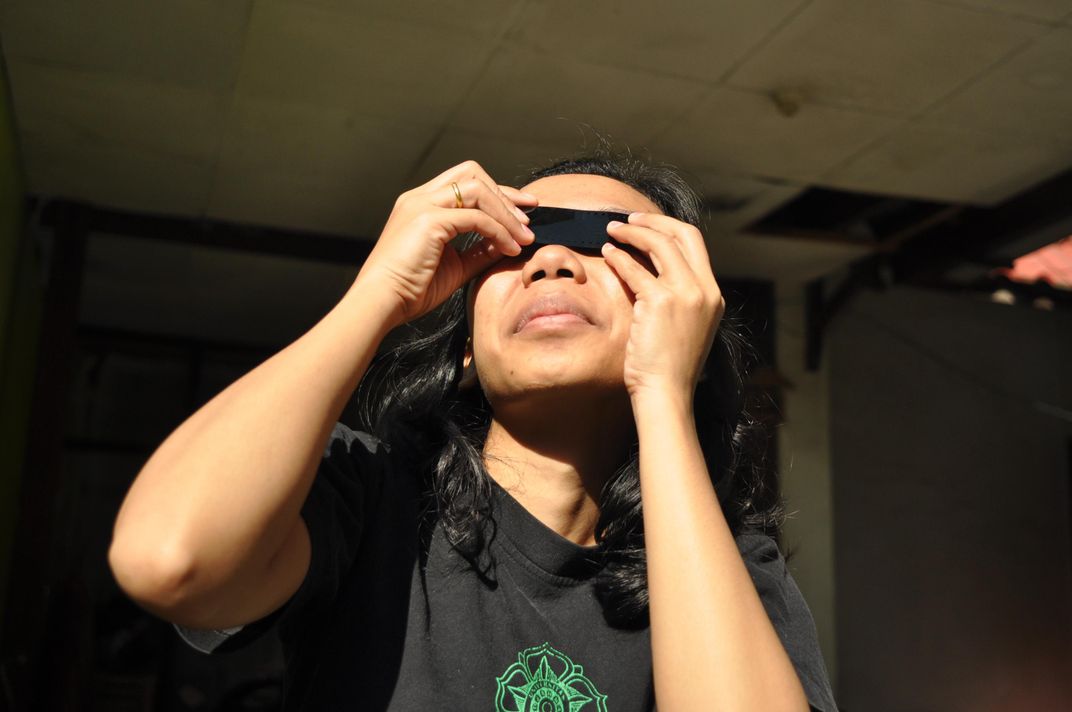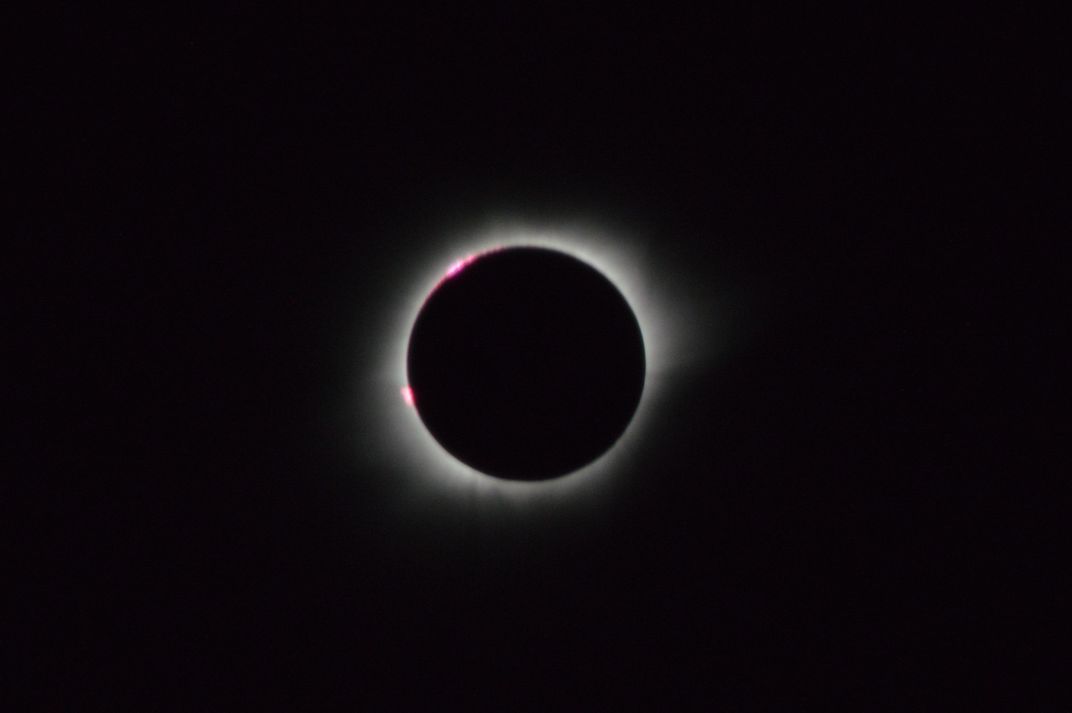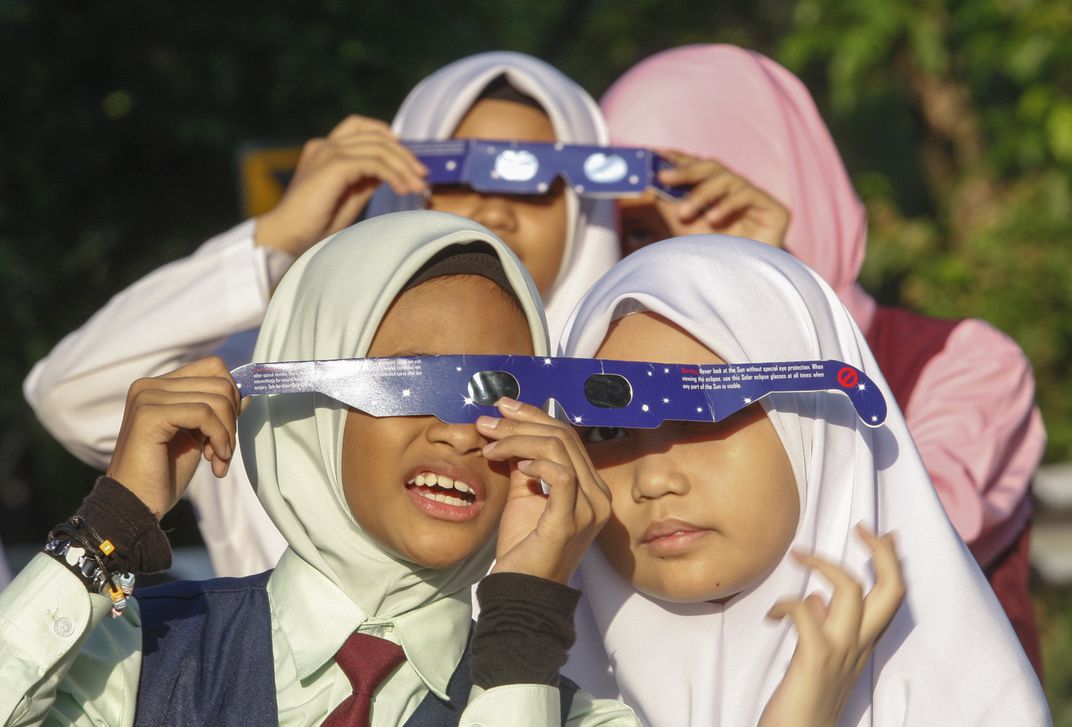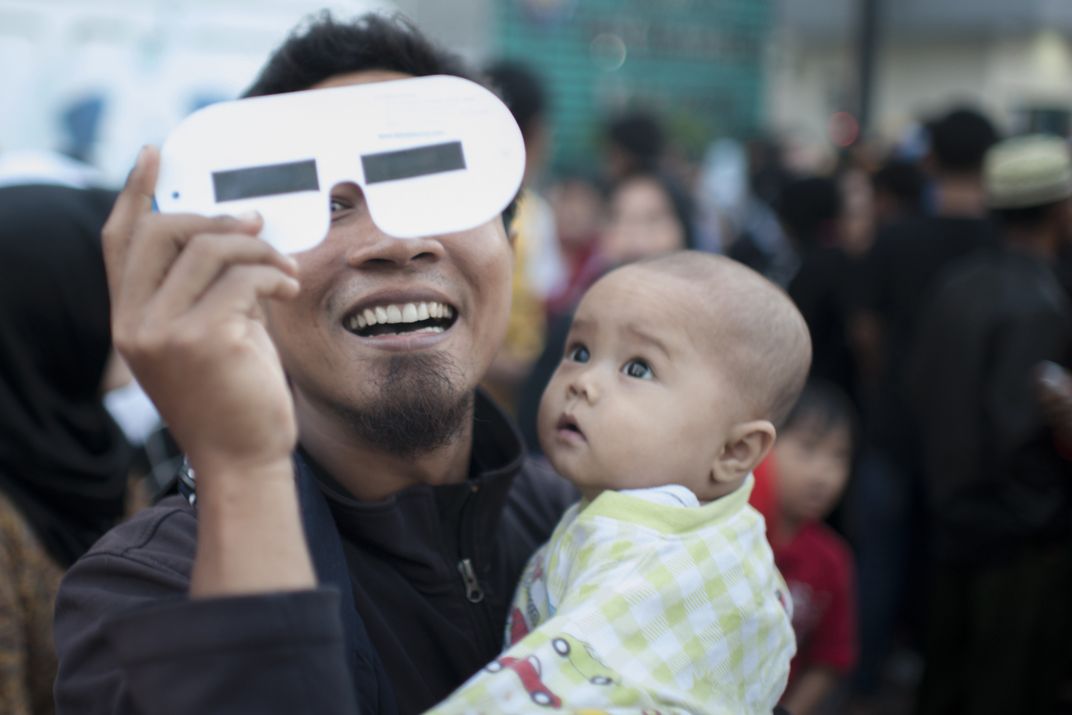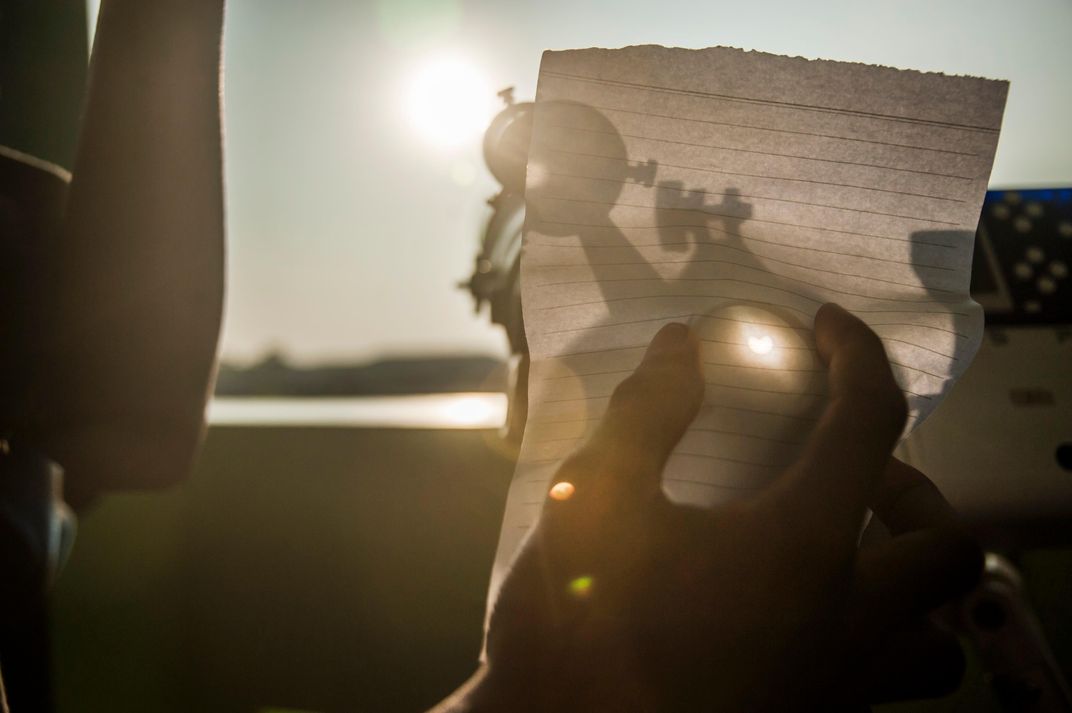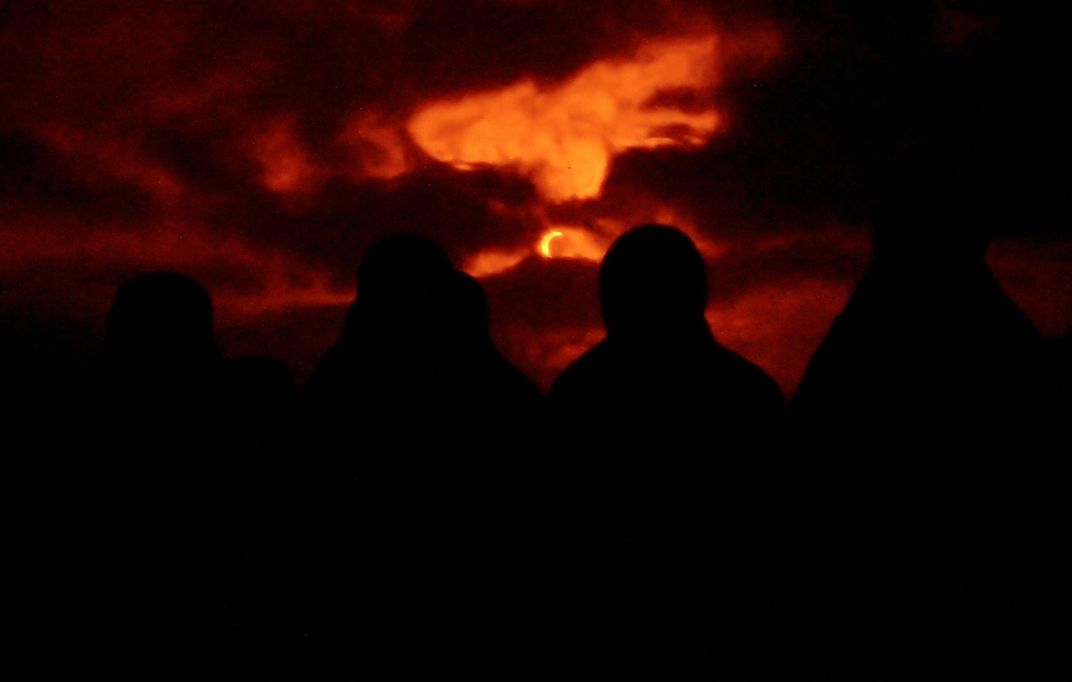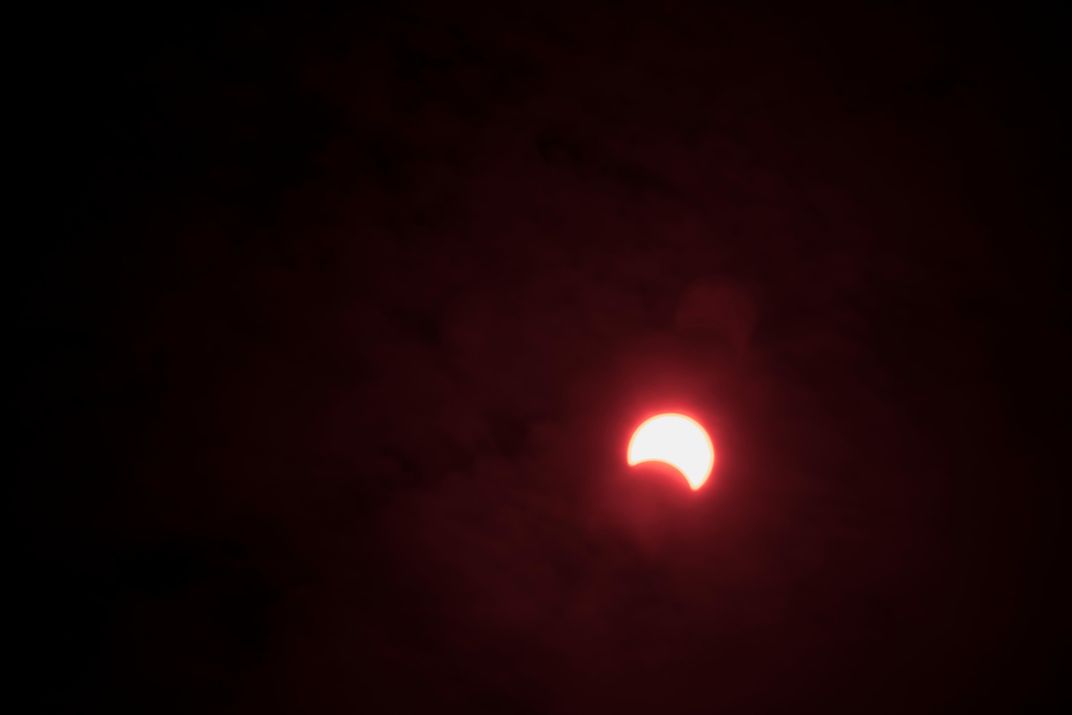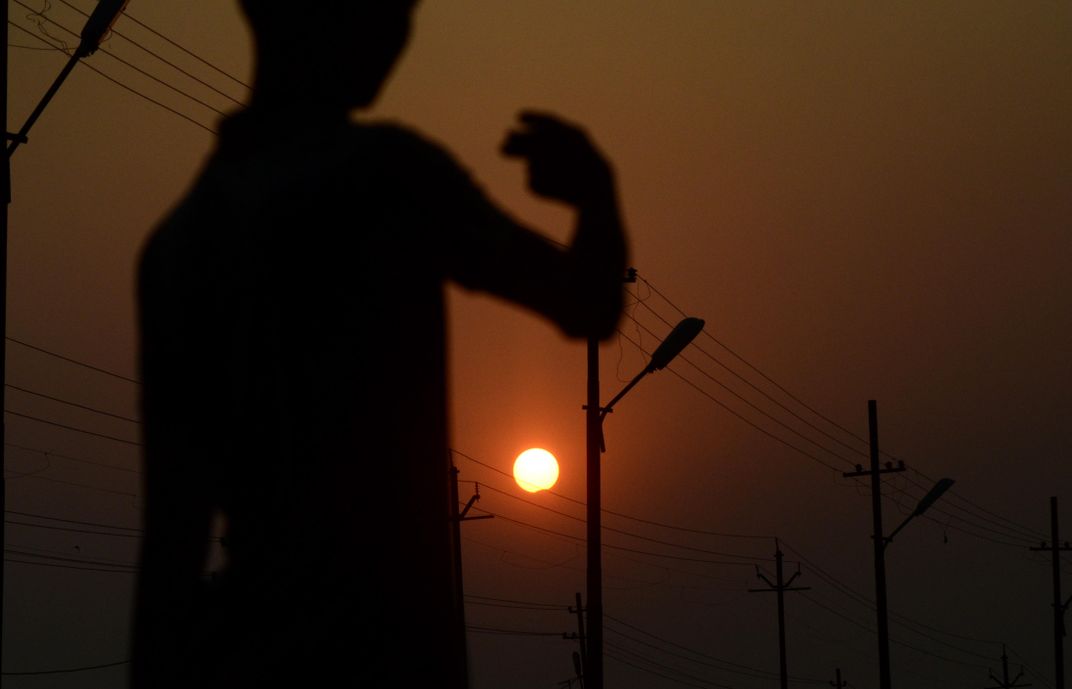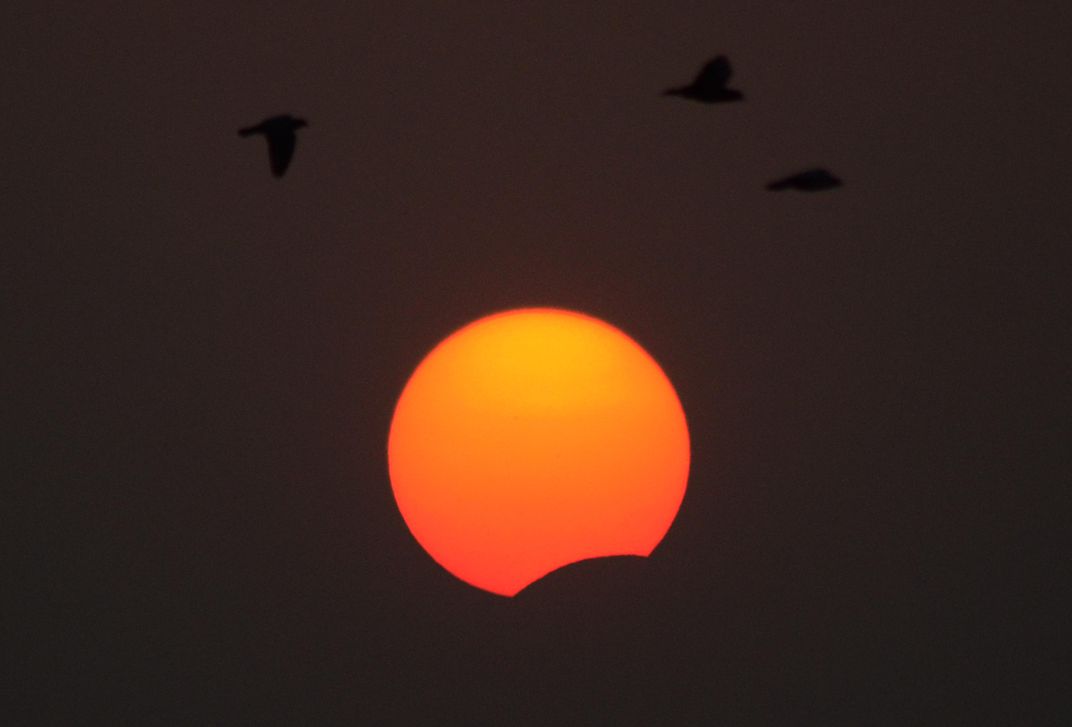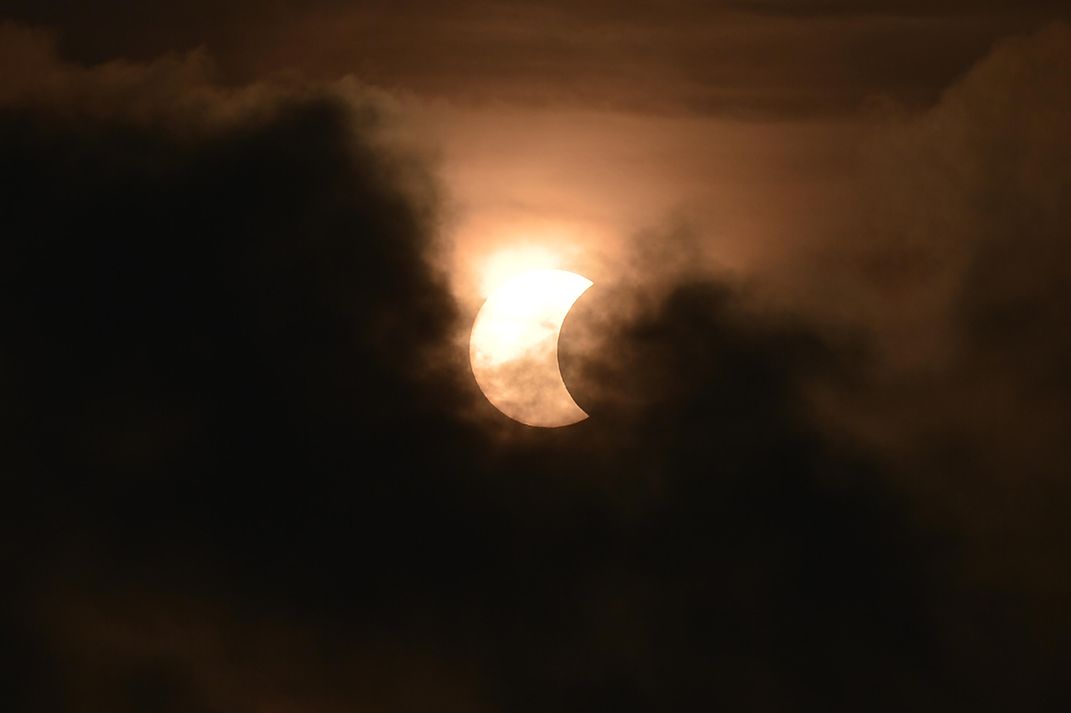Check Out These Photos From Last Night’s Solar Eclipse
Parts of the pacific and Indonesia went dark last night as the moon moved directly between Earth and the sun
Last night, people throughout Indonesia and parts of the Pacific got a good look at a rare occurrence: a total solar eclipse. As the moon blocked out the sun's glare, many captured the event in stunning photos and video.
But the moon's narrow shadow confined the full effects of the eclipse to 12 Indonesian provinces and parts of the Pacific Ocean. According to Gizmodo’s Atilla Nagy, about 40 million people got a good look at the total solar eclipse. But many more throughout Asia were treated to views of a partially blocked sun. And one lucky group of passengers aboard Alaska Airlines caught the spectacle from the air after the airlines delayed their usual departure time to cross the eclipse's narrow path.
The eclipse began at a little after dawn and over the course of three hours the views could be seen across several time zones, sweeping east over Sumatra, Indonesia, and even parts of Hawaii, The Guardian reports. The actual duration of a full eclipse was brief; the longest period of darkness reported in Indonesia was in the city of Maba, where the moon blotted out the sun for about three minutes.
Solar eclipses are stunning events, but they’re also a great way for astronomers to learn more about the sun. A total eclipse is a rare chance for scientists to observe the innermost layers of the sun’s atmosphere—a region that can only be seen when the moon blocks out the bulk of the sun's glare, the BBC reports.
"The Sun's atmosphere is where the interesting physics is," NASA physicist Nelson Reginald tells the BBC.
Getting the chance to learn more about the sun’s atmosphere is a great opportunity, but for the majority of viewers, being able to witness the rare occasion was enough.
“When the solar eclipse started the crowd cheered and then went silent in awe. People were taking photos while others just watched in amazement. Then when it finished people clapped quietly,” Ging Ginanjar reports for the BBC.
The next total solar eclipse will take place above the continental United States on August 21, 2017.
Solar Eclipse 2016